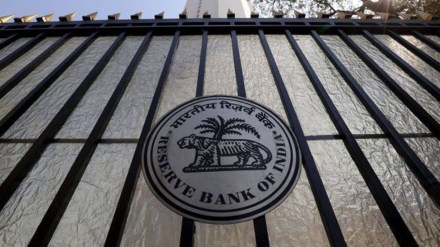By Amol Agrawal
What should be the objective of central banks? This is a question that never goes out of discussion. Moreover, the last 15 years have seen multiple crises, leading to changes in consensus over central bank objectives.
Before the 2008 crisis, the consensus was price stability should be the goal and inflation targeting the framework to achieve this. The 2008 global financial crisis shifted the consensus towards including financial stability with price stability as key objectives. Post the 2008 crisis, the recovery in most developed economies was weak. The discussion shifted towards including employment and growth as central bank objectives. The Reserve Bank of New Zealand, the pioneer of inflation targeting, included employment generation in its list of objectives. As inflation remained lower than target, central banks made policies to push inflation up.
The pandemic and Russia-Ukraine war pushed inflation to levels last seen 40-50 years ago. The central banks once again turned to price stability, increasing policy rates aggressively. The high policy rates, in turn, led to the bank crisis in the US, landing that country in a situation where bank/financial stability comes under a cloud. The central banks are back to where they started 15 years ago!
Also read: Living with low premiums
In fact, the problems for central banks are not just limited to changing macroeconomic and financial conditions. Climate change has become a major public policy challenge as well. Central banks, being public institutions, have to contribute towards this challenge.
How can central banks adjust to these constant challenges? One way is to have periodic reviews of central bank operations and their objectives. Few central banks such as those of England, Norway, Canada and Sweden have such reviews regularly. The US Federal Reserve and the European Central Bank also review their monetary policy. These reviews are done in multiple ways. The central bank can review internally or appoint a committee of external experts. The government can also set up an independent review.
The Australian government recently reviewed the functioning of the Reserve Bank of Australia and issued a report, An RBA Fit for the Future. The RBA Act (1959) lists three objectives of the central bank: stability of the currency, maintenance of full employment, and economic prosperity and welfare of the people.
The review says that the ‘economic prosperity’ objective should be the overarching purpose of the central bank as the welfare objective gives too much discretion. The central bank can contribute to this overarching purpose by focusing on price stability and full employment.
The review has also suggested replacing ‘stability of the currency’ with price stability. Currency stability also means protecting the value of currency, but RBA does not intervene in forex markets. RBA has been an inflation-targeting central bank for 30 years and targets an inflation level of 2-3%. The review maintains that the RBA must continue with its inflation target of 2-3%. For employment, the review says that the central bank should assess its full employment objective by analysing relevant indicators of labour market conditions.
In Australia, financial stability is handled by the Australian Prudential Regulation Authority (APRA). The review recommends the government should specify responsibility of the RBA towards financial stability, especially in cooperation with APRA. On climate change, the review says that the RBA should take account of climate risks but not use monetary policy to address them.
Apart from these objectives, the review says the central bank must have a Governance Board for more accountability, a Monetary Policy Board for more transparency, appoint a Chief Operating Officer to coordinate functions across the central bank, etc.
Also read: A sunset for royalty payments
The RBI also needs a similar review to be fit for the future. At its inception, the RBI preamble listed three objectives: regulating bank notes, securing monetary stability, and operating the currency and credit system to its advantage. In 2016, the RBI adopted inflation targeting and two more objectives were added: maintaining price stability while keeping in mind growth. While all these objectives are important, they are repetitive and not clear. For instance, monetary stability includes everything: price, credit and currency. Should regulating bank notes be a core objective in the digitalisation era? How should central bank interpret growth? The preamble does not specify financial stability, but the RBI regulates banks and other financial institutions.
There are other issues too. The inflation target is 4 percent with a tolerance band of +/-2%. However, the markets interpret targeted inflation to be the upper end of the tolerance band (6%). Inflation in India is mainly supply driven whereas monetary policy can mainly dampen demand-side inflation. There are governance issues such as the role and tenure of the RBI Central Board. The Central Board presided over demonetisation, which had implications for monetary policy under the purview of the Monetary Policy Committee (MPC). The RBI’s recent Currency and Finance Report discussed challenges posed by climate change.
The RBI constitutes committees to review its objectives. The last time RBI formed a committee was in 2013, chaired by Urjit Patel, which led to adoption of inflation targeting and institutionalisation of the MPC. Given the multiple changes since then, it is time for the government to constitute a committee to review and make the RBI ‘fit for the future’. The government should also conduct these reviews periodically. This could be done easily as the RBI Act (1935) has legislated the government to review inflation targeting every five years.
The writer is Assistant professor of economics, Ahmedabad University
Views are personal
